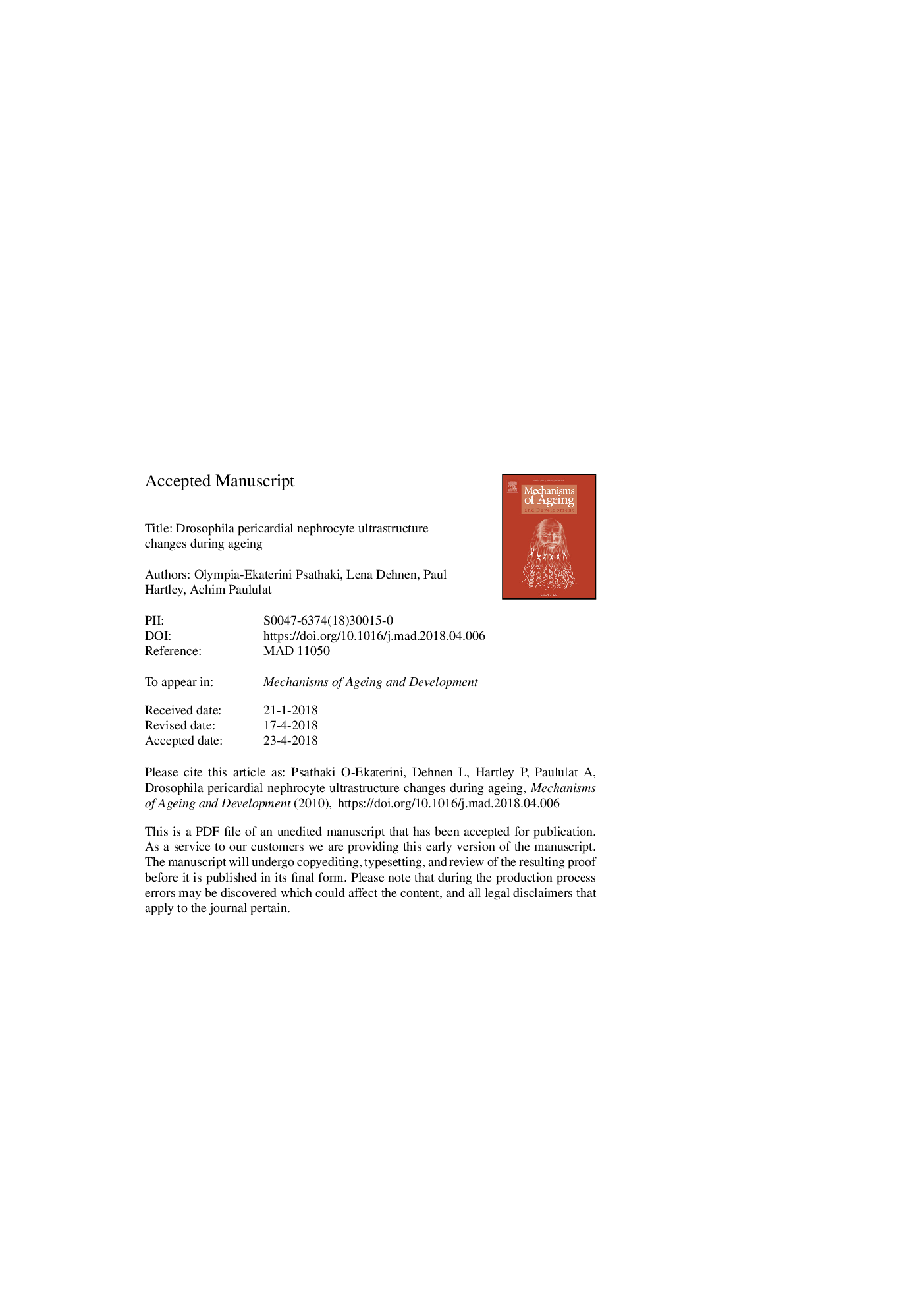| Article ID | Journal | Published Year | Pages | File Type |
|---|---|---|---|---|
| 8284667 | Mechanisms of Ageing and Development | 2018 | 29 Pages |
Abstract
Here we show that a labyrinth channel compartment and slit diaphragms, which are the histological structures enabling insect nephrocytes ultrafiltration, are established during embryogenesis first by the garland nephrocytes (GCNs). The later pericardial nephrocytes, which represent the majority of functional nephrocytes in larvae and adults, lack these characteristic features at the embryonic stage. During larval development, a subpopulation of the pericardial cells survives and matures into functional nephrocytes (PCNs) displaying a fully differentiated slit diaphragm and a labyrinth channel compartment. Likely the embryonic pericardial cells have primary functions other than ultrafiltration (e.g. in production and secretion of ECM constituents). We also show, for the first time, that PCNs in the adult fly undergo dramatic histological degeneration upon ageing. The slit diaphragms disappear, the labyrinth channel system degenerates and the lysosomal compartment becomes highly enriched with electron-dense material. When using nephrocytes as a model for genetic screening purposes or to investigate the specific role of genes involved in endocytosis, histological changes occurring upon ageing need to be taken into account when interpreting structural data.
Keywords
Related Topics
Life Sciences
Biochemistry, Genetics and Molecular Biology
Ageing
Authors
Olympia-Ekaterini Psathaki, Lena Dehnen, Paul S. Hartley, Achim Paululat,
